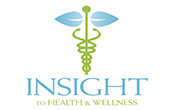Hypertriglyceridemia Treatment in Pelican Bay - Naples, FL

Triglycerides are fats that you take into your body from foods you eat. Your body transforms excess calories from all foods into triglycerides which are stored in fat cells in your body. Hormones release triglycerides to provide your body energy in-between meals. However, the typical American diet includes more calories than what is burned, leading to an influx of triglycerides in the body. This abundance of triglycerides is known medically as hypertriglyceridemia and can pose a serious threat to your heart health. In fact, when triglyceride levels approach levels higher than 200 mg/dL, cardiovascular complications can occur and your risk for heart disease steadily increases.
National guidelines for fasting triglyceride levels in healthy adults are:
- Under 150 mg/dl - Normal
- 151-200 mg/dl - Borderline
- 201-499 mg/dl - High
- 500 mg/dl or higher - Very High
If you suffer from elevated triglycerides, it is important to meet with a healthcare provider in Pelican Bay - Naples that can return triglycerides to normal levels so you may regain control of your health. Receive hypertriglyceridemia treatment today! Call (941) 845-6555 or contact Dr. Nancy Vance online.
Hypertriglyceridemia Causes
While diet and lack of physical activity are the driving forces behind hypertriglyceridemia development, other medical conditions can influence your triglyceride levels and cause the condition. These conditions include:
- Diabetes
- Liver disease
- Kidney disease
- Poor thyroid function
Certain medications are also known to elevate triglyceride levels such as beta-blockers, steroids and certain oral contraceptives. Age, weight and genetics also play a role in influencing triglyceride levels.
High Triglycerides Symptoms
Typically, there are no symptoms of hypertriglyceridemia, which is why it is so important to have blood lipid levels drawn regularly. Triglycerides are typically checked when your LDL (low-density lipoprotein) and HDL (high-density lipoprotein) levels—two fatty proteins that carry cholesterol in the bloodstream—are checked. When triglycerides are high, LDL cholesterol will also usually be high, while HDL will be low. High LDL levels sometimes come before high triglyceride levels and are the first warning that something is amiss.
If triglycerides become higher than 1000-2000 mg/dL, the following high triglycerides symptoms may present:
- Nausea
- Vomiting
- Back pain
- Chest pain
- Gastric discomfort
- Difficult or labored breathing
- Eye problems including a white, blue or grey ring around the cornea
Hypertriglyceridemia Testing and Diagnosis
A lipid profile test is used as a key diagnostic tool as part of a cardiac risk assessment which tests total cholesterol, HDL cholesterol, LDL cholesterol and triglyceride levels.
Triglycerides are influenced by eating and drinking (levels are higher after consuming calories), so fasting for 9-12 hours prior to testing is required in order to get an accurate triglyceride measurement. Your healthcare provider will give you a full list of instructions prior to testing, as other factors can affect your blood triglyceride levels including alcohol consumption, menstruation and physical exertion before your test.
Hypertriglyceridemia Treatment: How to Lower Triglyceride Levels
To develop the ideal elevated triglycerides treatment plan, your healthcare provider must first determine what is causing your hypertriglyceridemia. The first and most recommended step to lower triglyceride levels is to make key dietary modifications.
A diet to lower triglycerides focuses on not consuming more calories than your body needs so you can prevent calories from converting into additional triglycerides in the body. Choosing calories wisely is therefore important so you do not sacrifice key nutrients your body needs by consuming foods with no health benefits. Your triglycerides diet should focus on:
- Reducing and even eliminating sugars, unhealthy fats, packaged and processed foods and alcohol
- Increasing fruit and vegetable intake
- Incorporating healthy fats—like omega-3 fatty acids found in cold water fish—which are shown to positively influence triglyceride levels
- Reaching ideal daily fiber intake—particularly soluble fiber—which can help you feel fuller faster and slow down the absorption of fats and sugars
Physical activity is another important element of your hypertriglyceridemia treatment plan to help you maintain a healthy weight and burn off excess calories which would otherwise turn into additional triglycerides. Regular aerobic exercise such as walking, running or other types of exercise you enjoy can help to lower triglyceride levels.
If your triglyceride levels are influenced by other medical conditions, your treatment plan will also focus on addressing the underlying cause of hypertriglyceridemia. In certain instances, medication may be prescribed to control both cholesterol and triglyceride levels.
Regain Control of Your Heart Health
Your cardiovascular disease risk is affected by your triglyceride levels. Control your triglycerides to preserve your health and to achieve optimal wellness. Meet with a qualified healthcare provider in Pelican Bay - Naples who can teach you how to lower triglyceride levels through diet, physical activity and other lifestyle interventions. Call (941) 845-6555 or contact Dr. Nancy Vance online.
Insight to Health & Wellness, Inc.
Address
694 8th Street NorthNaples, FL 34102
(941) 845-6555
www.insight2hw.com


